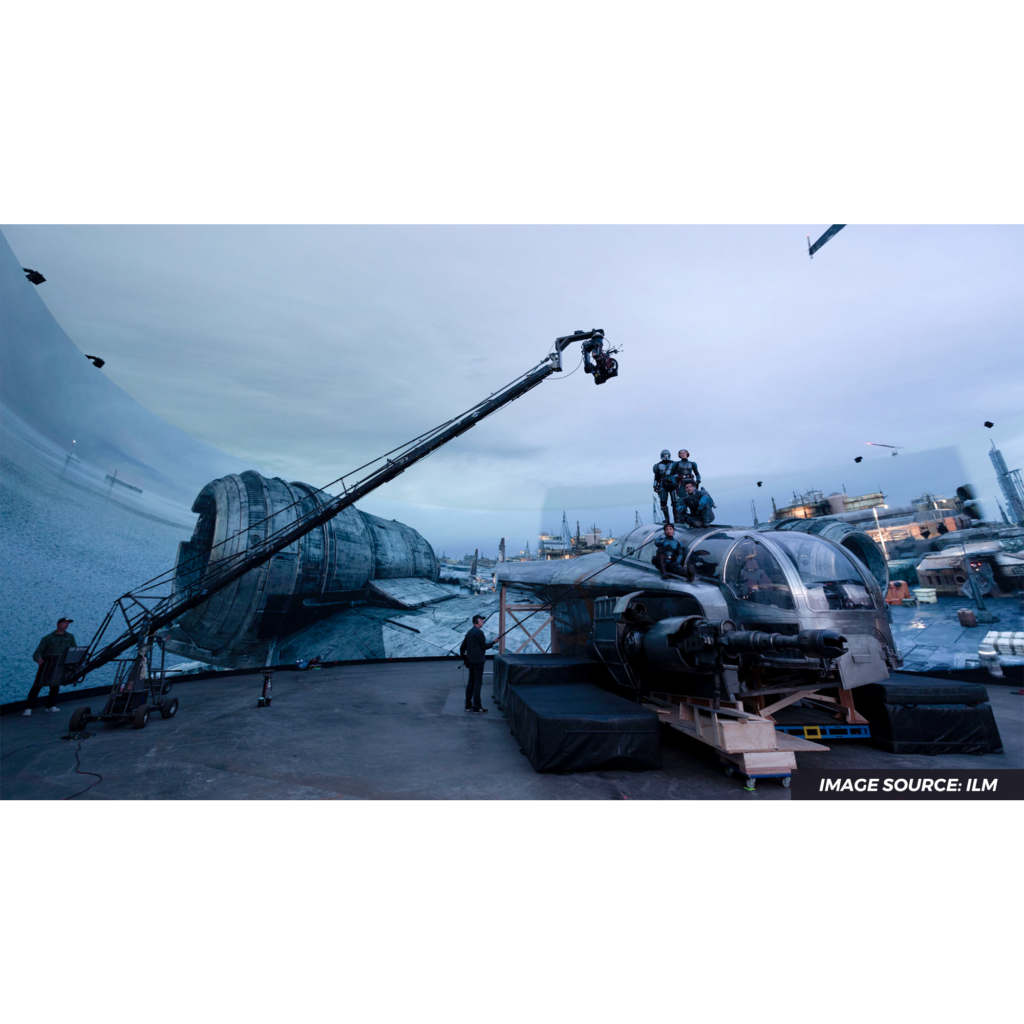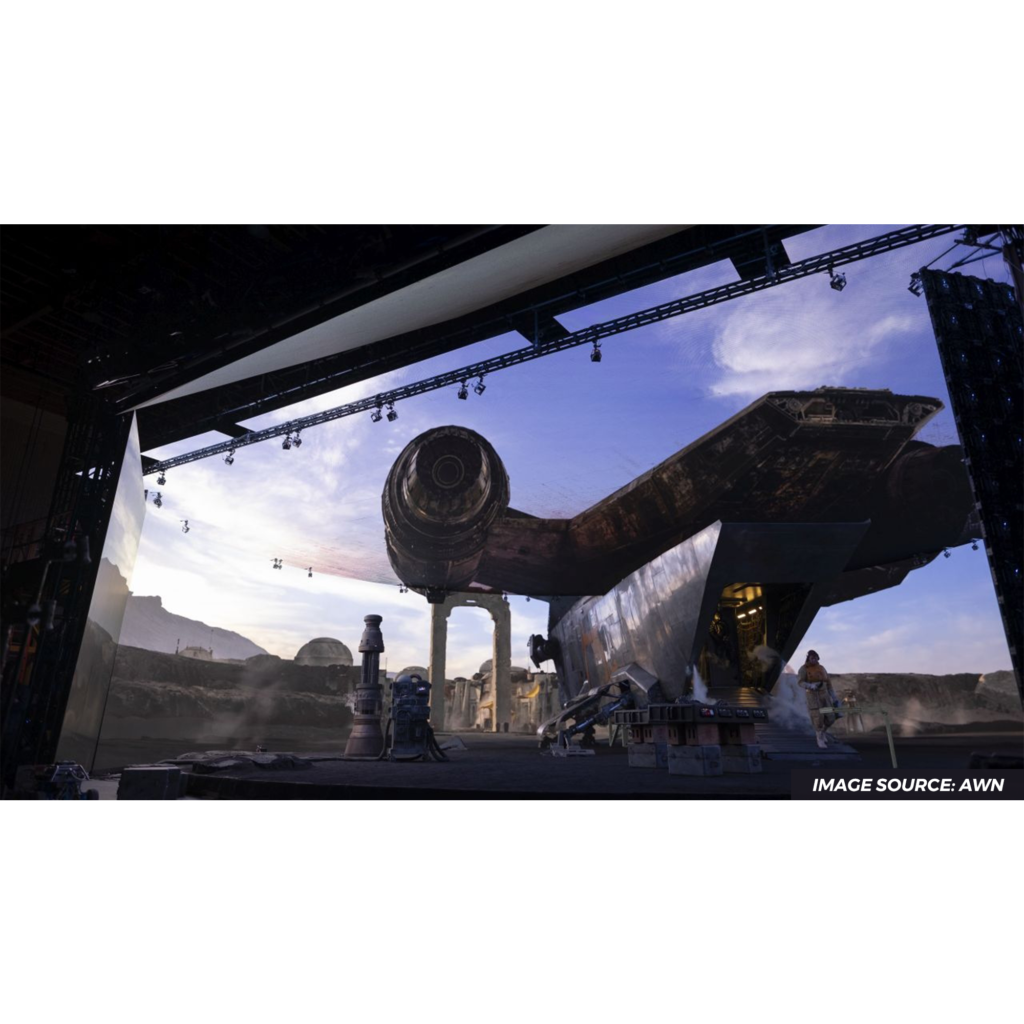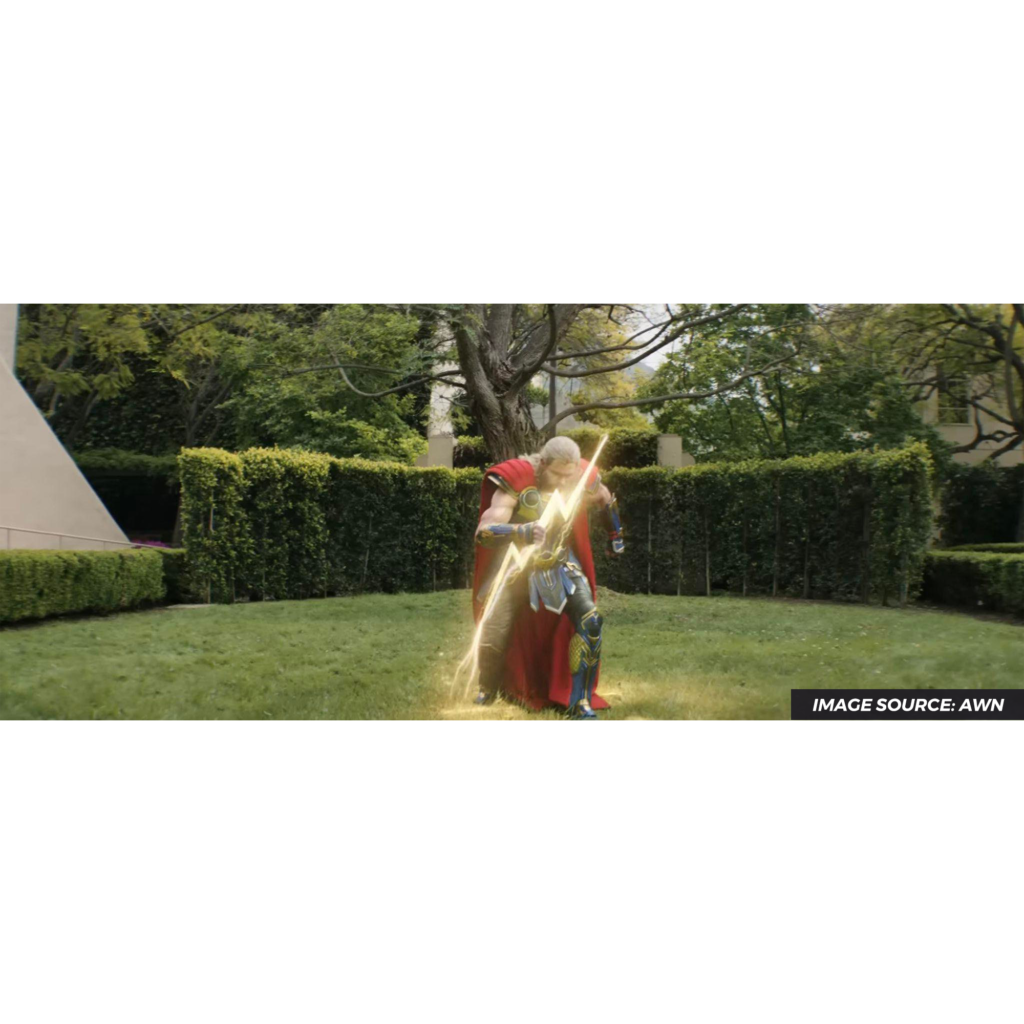Stagecraft Technology: The Next Step in Filmmaking

Green screens have been the norm of major VFX-driven productions these days, but, what if, we told you that there is another major technology that is going to rock the industry for the next few years? A technology that not only speeds up the production process but is also a highly efficient tool to enhance the overall quality of tools.
Stagecraft Technology
Stagecraft Technology is a major, major step in filmmaking. It is not only revolutionary, but also highly efficient, and customizable. Stagecraft technology is developed by Industrial Light Magic (ILM), a well-known VFX company. This development has certainly attracted major film production studios. Be it Disney, Warner Bros Discovery, or other studios. The studio has attracted filmmakers and provoked them to opt for the technology.

Why is it Revolutionary?
To know the answer to this question, we have to study the production methodology of green screens also known as chroma keys.
Chroma keys are used to create unique backgrounds in editing. All scenes are lit keeping in mind the final output. Filmmakers have to imagine the final output and perform guesswork. This ultimately proves that lighting is an essential and key component alongside staging, and blocking to accurately recreate the final output. However, this brings along some major challenges, mainly related to the creation of realistic sequences. Bad lighting makes it really obvious that a scene is shot using this sequence, thereby breaking the illusion. This prospect extends production time as filmmakers have to create realistic lighting that may help in post-production.
Stagecraft eliminates all these hassles since the background is recreated on set and helps filmmakers recreate efficient lighting that looks realistic. A team recreates backgrounds using advanced game engines such as Unreal Engine. With the help of this technique, the director, VFX supervisor, DOP, and actors can speed up their production process and utilize time efficiently. Stagecraft saves a lot of resources and allows filmmakers to shoot double the content, within a shorter time span. The biggest advantage being that the LED volume screen has its own light source, and eliminates the need for precise lighting. Filmmakers can determine on-set whether or not they need to incorporate lights or change the position of lights.

Challenges
Stagecraft has been used in several films and the results are great if done the right way. However, in several instances, the results aren’t quite as good as expected. One of the biggest reasons is that the edge of the screen is quite visible, which acts as a major factor in breaking the illusion. This downside proves that just like any other technology, Stagecraft also has its workarounds and needs proper testing. Another downside is the ability to enhance workflow.
Films and Series Using the Technology
This technology is recently used in the Disney+ show Mandalorian. Disney even releases some interesting footage showing how the technology operates. The footage was truly mesmerizing and offer an insight into the real production environment. The Mandalorian, played by the renowned actor “Pedro Pascal” sports a reflective metal suit, which, might make it difficult if a green screen is utilized. The use of Stagecraft technology is extremely useful, as demonstrably visible from the 2 seasons released. Not only is the illusion of fake environments indiscernible but also enhances the production process.
Another big contribution of the technology is in 2022 The Batman film, where it is almost impossible to know if the backgrounds of the film were produced using Stagecraft technology. The LED volume stage was used to faithfully recreate Gotham City frame by frame.
Some Shortcomings, and How Trials and Testing Will Make This Technology Universally Acceptable?
The technology is still in limited use as of now since the LED volume stage has some minor shortcomings.
- EDGE Visibility Issues
Edge visibility is as self-explanatory and complicated of an issue as possible. Since these screens are rounded, the edges of the screen are clearly visible in a picture, this shortcoming hinders believability and creates obstacles in visual trickery. Audiences are clearly able to notice the edges of the screen, which, might not always be the issue of the technology. The person handling the technology is equally to blame since trying and testing is the norm for almost any technology that has come out, I mean green and blue screens still undergo numerous tests to date.

- Trying, Testing, and some advantages
For any technology that has been released newly several trying and testing phases are met. The Mandalorian utilized this technology perfectly and smartly, thereby highlighting the potential the technology embodies. The industry is slowly witnessing various benefits of technology. Several advantages and features such as the adaptive tech, wherein, the background changes as per the movement of the camera, and the ability to change backgrounds in real-time are undeniably great features that shall greatly benefit the future of this technology.
AR, AI, and Numerous Upcoming Technologies Shall Elevate this Technology
Filmmaking is changing constantly, the sheer usage of gaming engines for the creation of backgrounds in-camera is a unique and compelling feature that may transform the filmmaking industry in its entirety. As the world witnesses AR technologies, films are sure to witness major changes. Stagecraft technology is built for big productions, however, it may also be used by small productions and independent filmmakers. As to what lies ahead for this technology, only time will tell.
Author: Anirudh G Rao
